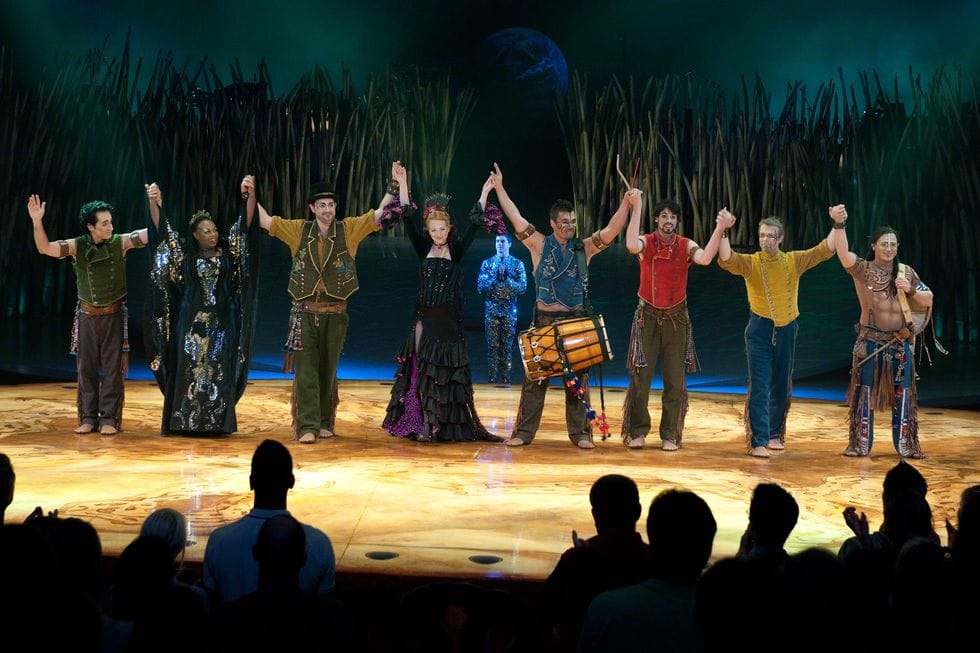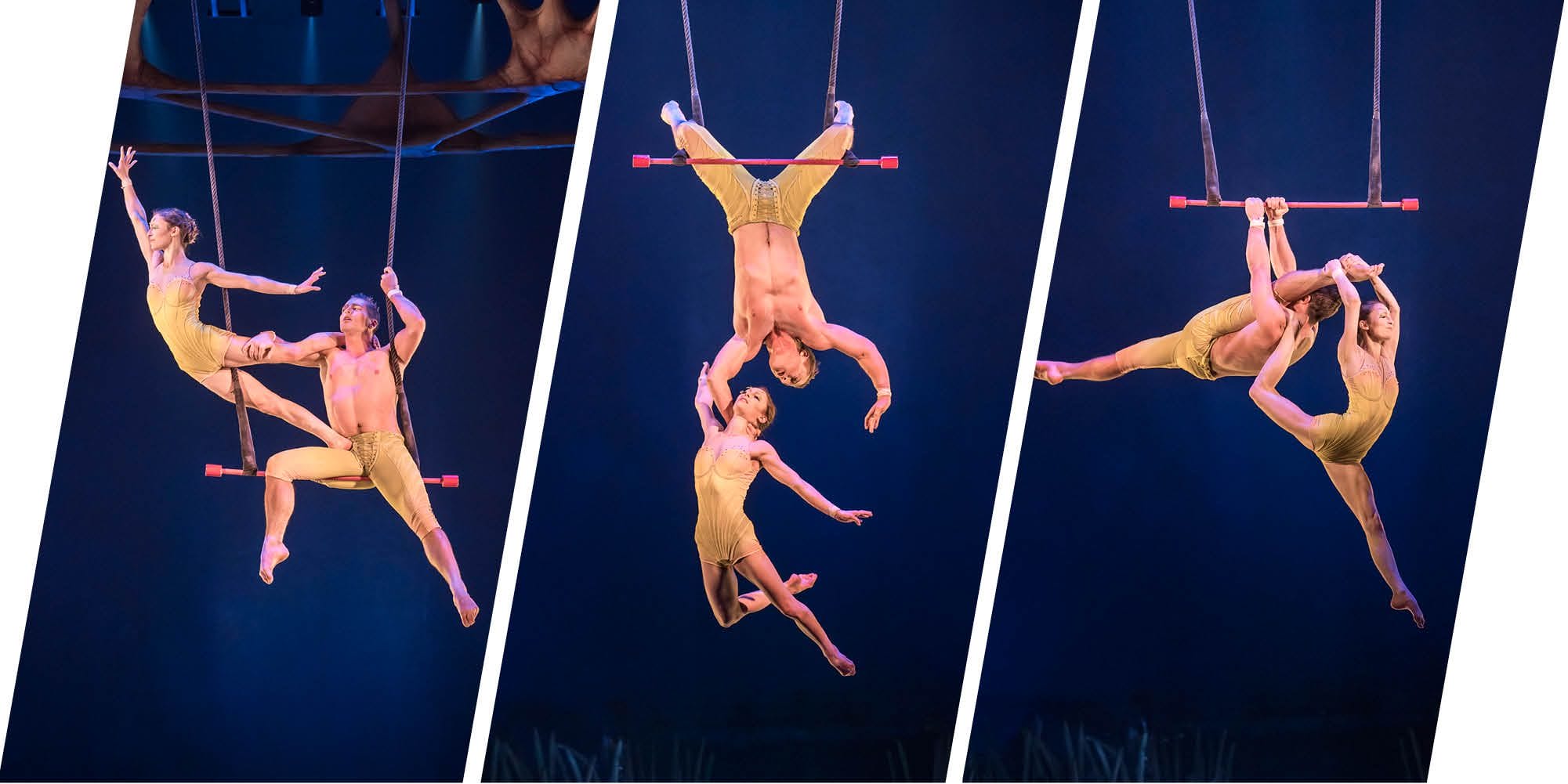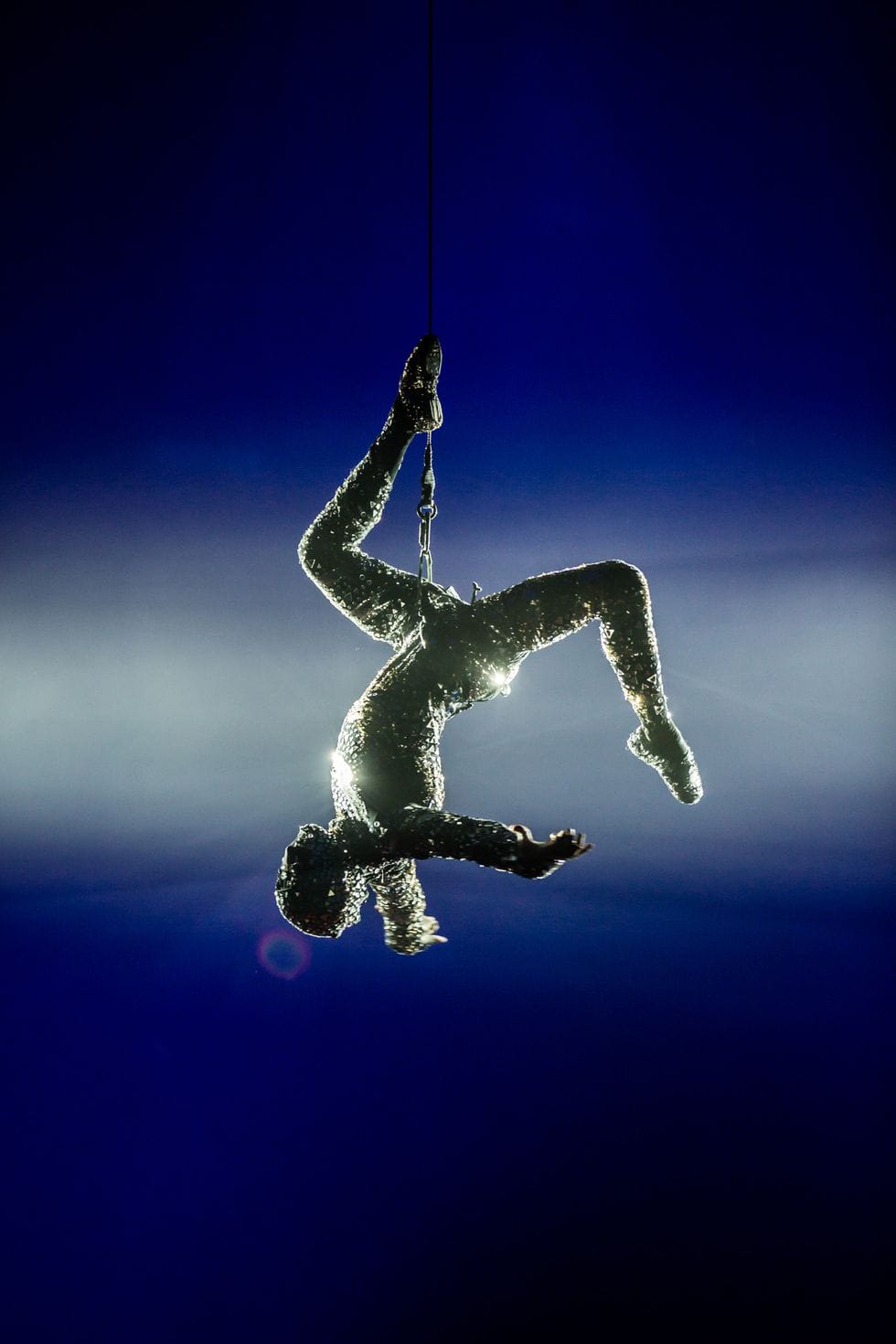There aren’t many shows that keep you on the edge of your seat, make you laugh and boast beautiful costumes, but Cirque du Soleil’s TOTEM does just that. It tells the story of the human species, from our original amphibian state up to modern man. The characters evolve on a stage, telling the story through performance, costume and an incredible stage set.
To celebrate the show coming to the Royal Albert Hall in London in January, we went backstage at the current show in Paris, to speak to the women who really know what life in the circus is like.
Cirque is a very multi-cultural workplace
“Learning to work with so many different people is a good challenge. We all come from different backgrounds and cultures but, even within cultures, there are so many different stories. You learn how to address people and how you want to be addressed; sometimes you have to tell people that’s not OK and that has been a good challenge. We have to learn to do those things.” – Esi Acquaah-Harrison, singer
Esi taking a bow on stage after performing (second from left)
Diets aren’t restrictive, but protein is key
“My dance partner would never complain about what I eat or what I weigh, so I’m never going to have restrictions. Instead I eat what I want, but I do remember to eat a lot of protein because of the intense routines and exercise required. One thing I will never do is deprive myself with what I eat, whether that’s french fries or chocolate. I listen to my body.” – Melanie Dupuis, trapeze performer
There’s more to the costumes than their appearance
“It’s our job to make sure that the artist feels safe and comfortable, so that they’re ready to go on stage. They need to be fully focused on their performance – it must be the only thing that’s inside their head. We might do little things to help them, like fitting padded protection on a hip or an arm inside their costumes, so they aren’t worrying about whether their costume is right.” – Deborah Linden, Head of wardrobe
Hair and make-up is more complicated than it seems
“We have a lot of headpieces, so we use a lot of hair pins and grips. Sometimes we braid the hair around the headpiece and then add grips. With a wig, we use a wig cap with latex elastic that hugs the head.” – Deborah Linden, Head of wardrobe
Stretching is a crucial part of exercise
“Doing the show keeps me in shape, but I also need to stretch a lot so I don’t suffer an injury. In this company we do a lot of shows, so it’s good to do training that pushes the body to work differently and that helps maintain stamina. Otherwise, the exercise you do gets repetitive.” – Melanie Dupuis, Trapeze performer
The performers still get scared
“The trapeze is really high and it’s not always secure, but we always have a mat underneath. I always have fear in mind, but it pushes me to do the movement. Breathing helps me to to get over the scary part. I trust my body because I know I train a lot for this so I know that my body knows what to do. I try not to think about it too much and tell myself, ‘Ok Mel you know how to do it so go for it!’ I also trust my my partner, which is crucial.” – Melanie Dupuis, Trapeze performer
Cirque performers sacrifice their personal life
“We are a touring show, so your life is where the work is. Unless you’re on sabbatical, on leave for medical or you’re off for a long time you don’t get to go home often. There is no work-life balance because I’m just not in London, which is where my family and friends are.” -Esi Acquaah-Harrison, Singer
Being upside down a lot has its perks
“Training at Cirque has helped my spatial orientation because I’m often upside down and I need to know where to go and where to look. It’s hard to understand your body at that point because you need to feel a movement rather than think it too much. I was surprised about how fast you can adapt and how you can understand further the space around you.” – Melanie Dupuis, Trapeze performer
Cirque careers have a shelf life
“It depends for each artist – some stop when they want to have a family, but there’s one artist here who has had a child and continued training afterwards to stay on the show. The type of job you do within Cirque also comes into it; a juggler or a clown could do their job for longer because it’s less physical than what I’m doing. For me, it depends on my partner and for how long his body can cope with the stretch and pressure.” – Melanie Dupuis, Trapeze performer
Book to see Cirque du Soleil at the Royal Albert Hall from 12 January until 26 February 2019






